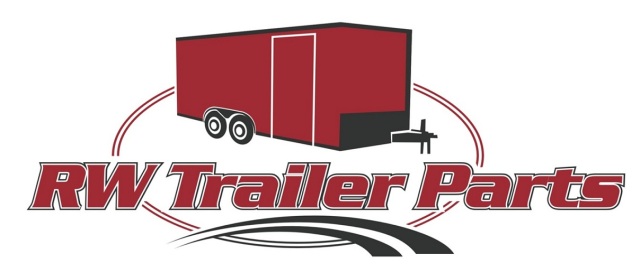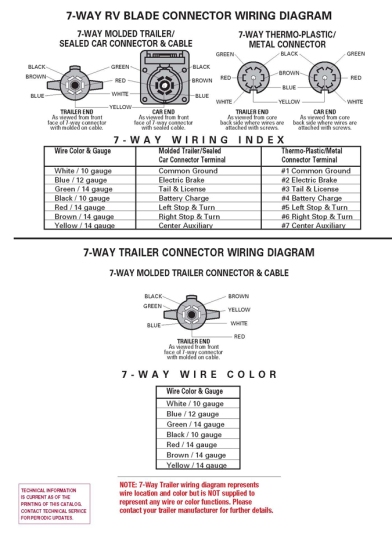 Most utility and marine trailer hubs are packed with bearing grease. In this blog we’ll discuss how to determine when to clean and repack your hubs, and how to accomplish this without any special tools. To begin, assemble the following common household items:
Most utility and marine trailer hubs are packed with bearing grease. In this blog we’ll discuss how to determine when to clean and repack your hubs, and how to accomplish this without any special tools. To begin, assemble the following common household items:
Large Channel-Locks, Pliers, a plastic or disposable container to clean bearings in, shop rags or strong paper towels, a small block of wood approx 4″ square, a good grease-cutter (paint thinner will work, though it’s not the best), rubber gloves, a hammer or rubber mallet, floor or vehicle jack and jack stands (2 per axle), premium wheel bearing grease (I like Pennzoil 707L), and a new cotter pin or tang washer (for EZ-Lube axles). To really fill your hubs, you will probably need a 1# can of grease for each axle (2 wheels). Also, have replacement grease seals handy. I always look for “double-lip” seals, as they are not much more than single-lip, but they have a spring inside the rubber that helps keep a tight fit on the spindle base.
Put your jack directly under the axle, behind the wheel and u-bolts attaching axle to leaf springs, or behind attachment brackets on tor-flex axles and lift the tire only a few inches off the floor. Place a solid tripod stand on the axle, move the jack and lift/secure the opposite side of the axle. Spin the wheel and listen for any rumbling sound while putting your hand on the fender to feel for strong vibrations. Bad bearings will grind and usually make a racket. Next, open your channel-lock and grab opposite sides of the dust/hub cap. Work back and forth on the cap to rock it out without much damage. Take a good look at the grease. If it has its original color and isn’t brown, discolored or runny, and the wheel has passed the sound and vibration test, then your bearings are almost always in good condition and your grease likely does not have to be changed. If you are lucky enough to have EZ-Lube axles, now would be the time to pump grease into the grease fitting at the end of the axle, and pump until grease is virtually spilling out of the hub. Replace the cap and repeat the process on other wheels. Tap the cap lightly with hammer or mallet while gently spinning the wheel to get it seated.

If grease needs to be replaced, remove the hub (with the tire and wheel still attached) by first removing the cap as suggested above. Then determine if the hub has a cotter pin or tang washer. If your spindle has a grease fitting and a “D” shape, then push into the open slots in the “castle nut” with a small flat-head screwdriver and bend the metal tab away from the nut and towards the spindle. This tab may be hard to see, but is always on the flat side of the spindle, so there will be only a couple of places on the nut where it could be. Once the washer is out of the way, remove the castle-nut with your channel-locks. For axle nuts with cotter pins, simply straighten the pin out as much as possible with your pliers, then grab the “U” end and yank it out. I like to use my linesman’s pliers, grab the pin in the “cutting”side of the jaws, and use the hub as leverage to pull it out. When the nut is nearly off, position a rag just below the hub opening to catch the outer bearing, nut and washer and keep it off the floor. Put into your cleaning bucket with your solvent and swish it around. A small paintbrush will help remove the grease. Flip the hub and tire/wheel over to access the grease seal. I keep the tire attached to make seal removal easier in this step. Open your channel-locks all the way and put the end of the upper jaw under the lip of the seal. Putting your knee or foot on the wheel to keep it stable, push down on the pliers to pop out the grease seal in one swift motion. Discard seal or clean and take with you to your parts dealer to measure for a match. Not all seals are the same, and some hubs can use multiple seals depending on the width of the trailer spindle. Clean bearings with solvent and brush. If you have an air compressor, use it to blow off the excess solvent. Make sure all solvent is removed before packing the bearings. Use rags or towels to completely remove all old grease from the hub.
Inspect your bearings, looking for discolorations, bent bearing cages, or any spotting. I like to run my fingernail up and down the rollers to check for any scratches in the steel. If there are any rough areas on the rollers, the cage is excessively loose, or if the bearing is questionable in any way, replace it. If the bearings are pitted, then the “cup” or race is probably also pitted. Inspect hub races and run your fingernail over them as you did the bearings. Any pits or rough areas will produce heat and friction and could lead to hub and axle failure. If races need to be replaced, ideally a brass rod (to prevent scratching the harder race) would be used to knock the race out from its rear by tapping the rear edge of the race side-to-side until it falls out. A strong punch or screwdriver can be used in place of brass rod. If you don’t have a “race driver” set to install the new races, try this method: Put the new race loosely into the hub (flat side towards hub interior, or course). Place the OLD race on top of the new one so the the outer edges are even with each other. Center a 2″ hitch ball, ball side towards hub, and into the center of the old race and tap with a hammer until the new race is seated fully into hub.
Like myself, most people do not have a bearing packer. I put a palmful of grease in one hand and use the other to push my bearing into my palm, forcing grease into the roller by rotating and pushing the bearing over and over into the grease. Keep rotating and pushing the bearing firmly into the grease, taking care to make sure the bearing is completely packed. Set aside on a clean rag and pack the remainder of your bearings. Flip the hub/wheel to expose the rear and put a scoop of grease into the hub. Place rear bearing into hub, sitting fully into the race, and place edge of grease seal into the hub opening. Put a block or small 2×4 on top of the seal and tap into hub with a hammer or mallet, seating grease seal fully into hub but even with the hub’s edge. Do not drive seal beyond the edge of the hub or the seal will not sit properly on the spindle base! Flip tire and wheel over and install outer bearing loosely into the hub. Place hub on spindle, working the spindle through the outer bearing and press bearing into the race to set it. Push spindle washer all the way to the outer bearing and then install the axle nut (if using a tang washer, put on between washer and nut). Manufacturers will recommend hand-tightening the axle nut, but I like to use channel-locks to thread the nut until just snug, then back off enough to install the new cotter pin or bend the tang washer into the nut. This will allow just the slightest amount of “play” in the hub, which is recommended. Tightening the nut too much here will create friction and heat and can cause premature bearing/grease failure. Spin the wheel. It should spin freely and with no noise. Note: on braking axles, you will hear shoes lightly touching the spinning drum wall if brakes are adjusted properly. Tap the hub cap in carefully while the wheel is spinning, a little at a time, using the small wood block as a buffer to minimize damage to the cap. If you are using “bearing buddies” here, use a grease gun on the cap’s fitting and pump until cap is full and grease starts to come out of the escape hole near the top of the cap (make sure you are using grease compatible with your “tub” grease).
Until next time!
Rob Wiseman, R W Trailer Parts, LLC
Please visit our website at http://www.rwtrailerparts.com







